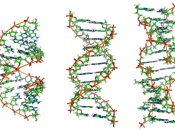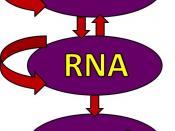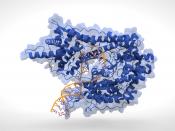Introduction
The discovery of DNA by Watson and Crick had revealed its principle structure and that DNA is not only as the carrier molecule of genetic information but also represent the beginning of the molecular understanding of genes. Since then the central dogma of molecular biology is established, the concept of that DNA is transcribed to RNA then RNA can be translated to proteins, which can regulate and have functions in our body is well known all around. Of course, the details of the pathway is getting more and more complex as technology improves, but the general rule of central dogma still holds truth. It is believed that DNA base pairs sequence so called genetic codes when can be related to amino acid sequence is nearly universal to all living organisms. As the physical structure of genes was first established by work in bacteria it soon became evident that transcription of DNA into RNA and translation of RNA into protein occurred simultaneously (Brenner et al.,
1961; Imamoto and Ito, 1968). In eukaryotes the gene structure was assumed to be the same although the synthesized RNA has to be transported from the nucleus to the cytoplasm where it can be translated into protein.
There are two major divisions of DNA that are transcribed to RNA, one is called exon which also known as protein coding region and the other part is non-protein coding region called intron. The true biological functions of intron are yet to be discovered by scientists, although it was usually regarded as "Junk DNA" in the coding sequence. All genes begin with exons (the protein-coding segments), but most have a variable number of introns within them that alternate with the exons. Introns were discovered in 1977 as a result of observing that the mRNA used to code for...



Good Information
This was very good information! Good for Bio. Classes! A
3 out of 3 people found this comment useful.